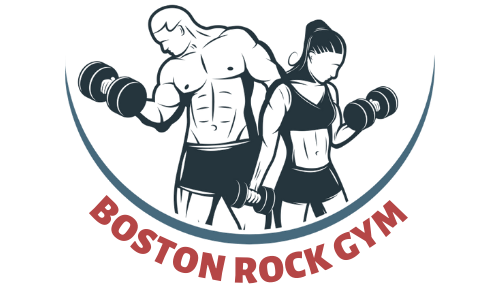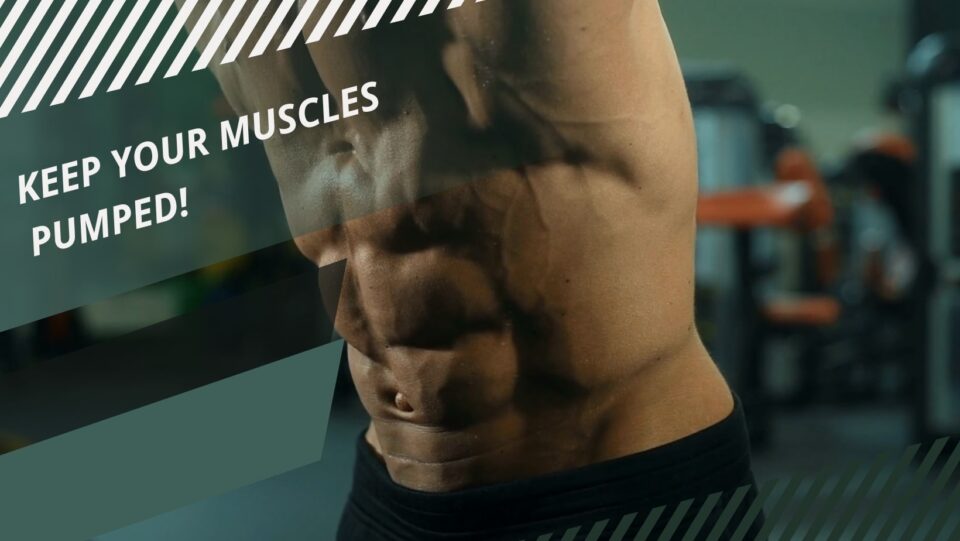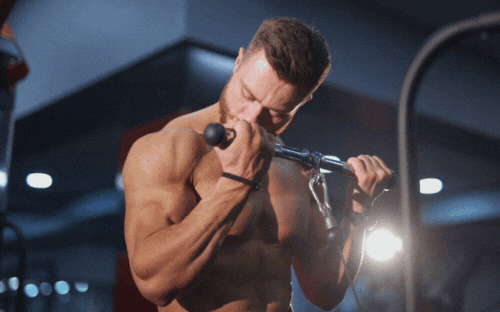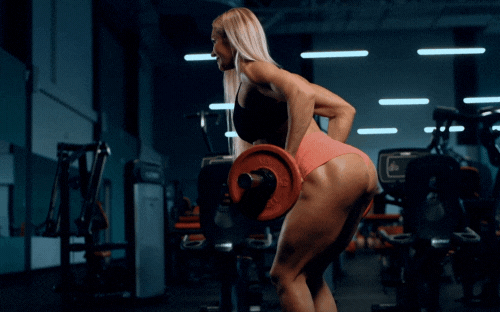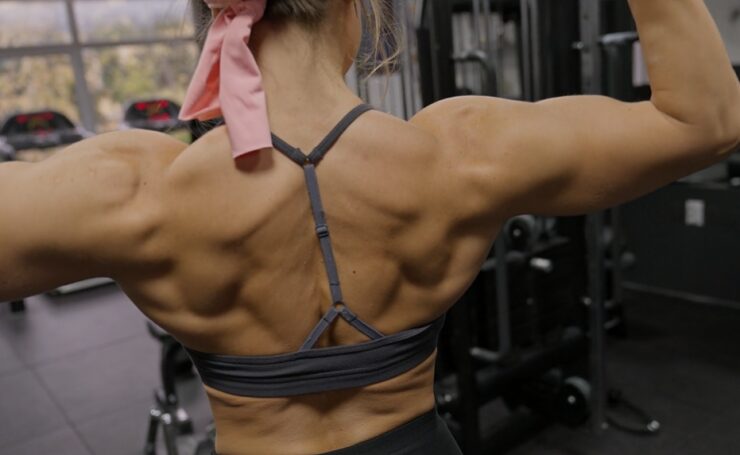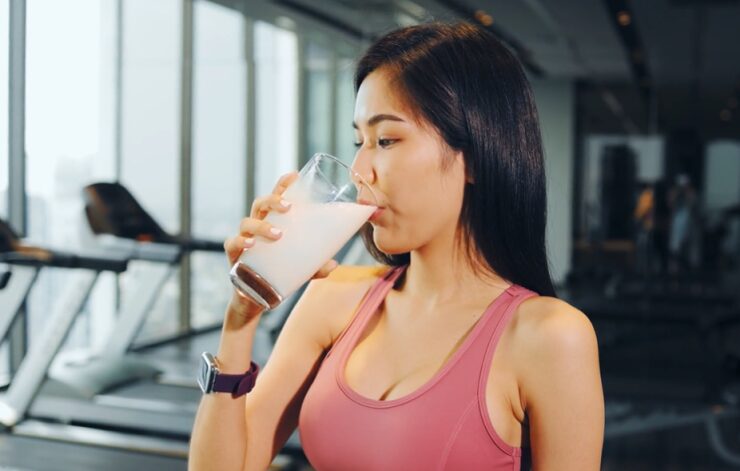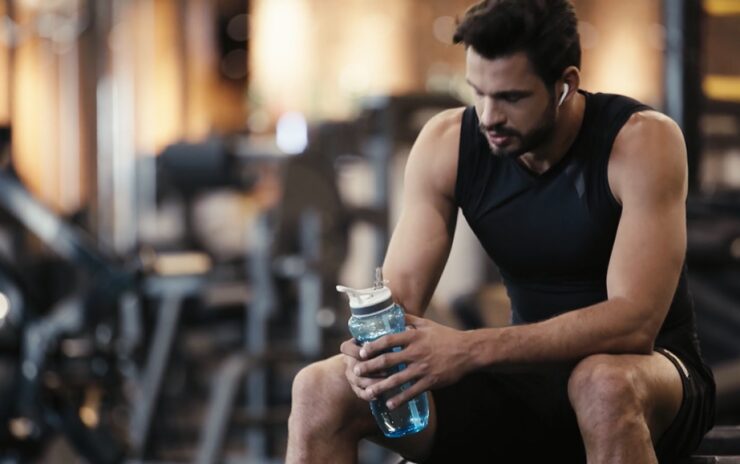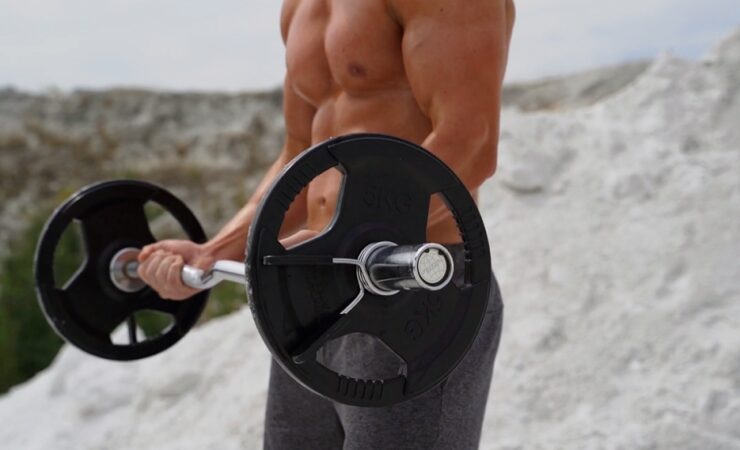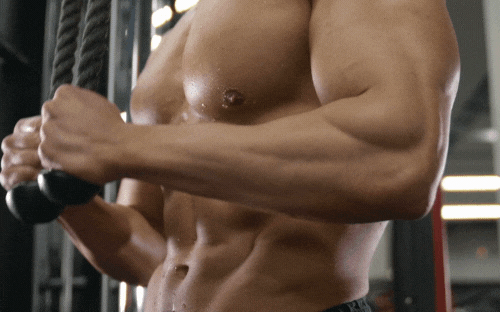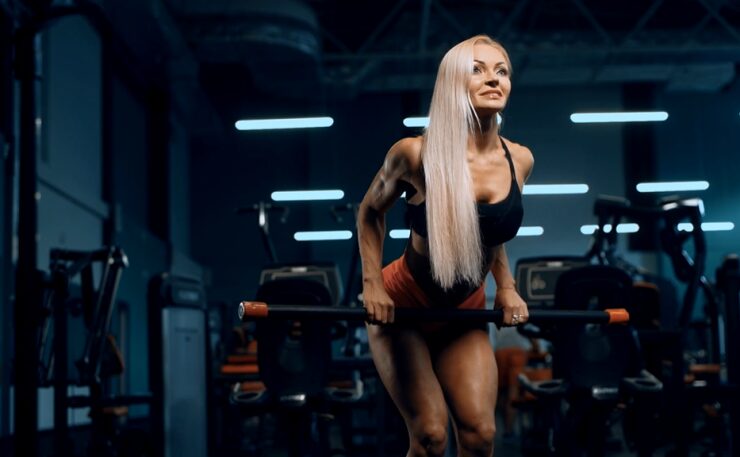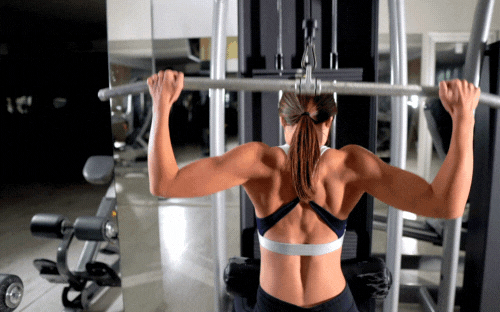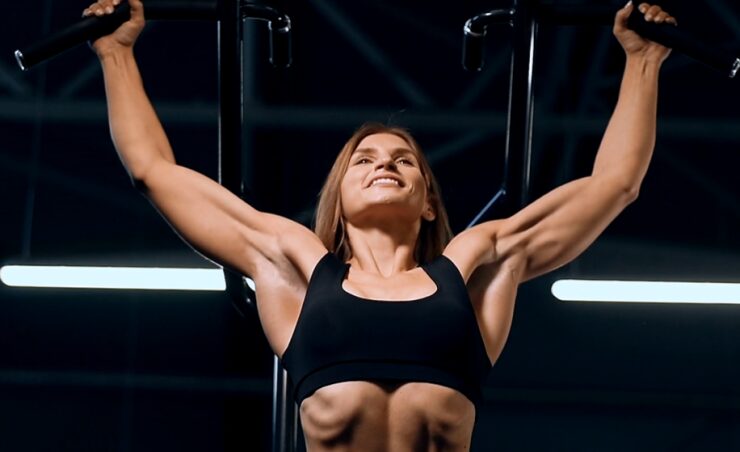Ever finish a workout that’s so brutal, you feel like you’ve just gone twelve rounds with a grizzly bear, only to catch a glimpse of yourself in the mirror and see muscles that look like they’ve been chiseled out of granite by the gods themselves?
That’s the pump. It’s like standing victorious in a gladiator’s arena, like having an Olympic medal draped around your neck, like reaching the pinnacle of your training goals. It’s like being the king of the gym jungle.
But let’s keep it real, this pumped-up sensation and appearance of our muscles is as fleeting as a protein shake in a bodybuilder’s hand. The effect is temporary. Yet, we gym rats chase this feeling during our workouts, sometimes even more than we chase that last slice of pizza.
So, what exactly is this muscle pump, and how long does it last? Strap in, we’re going deep.
The pump, as we call it, is our ideal self-image. It’s a reflection of our true potential. As gym warriors, we’re always in pursuit of this pump. It’s a chase that never ends. It’s like the gym version of the Holy Grail.
Arnold Schwarzenegger, the king of the iron jungle himself, said it best: ‘The greatest feeling you can get in a gym, or the most satisfying feeling you can get in the gym, is the pump.’ And I couldn’t agree more. It’s like the gym’s version of a standing ovation.
| Do’s | Don’ts |
|---|---|
| Do eat a balanced diet with enough protein | Don’t skip meals |
| Do hydrate well | Don’t dehydrate yourself |
| Do follow a consistent workout routine | Don’t over-train |
| Do incorporate high-repetition exercises | Don’t ignore the importance of rest periods |
| Do use compound movements | Don’t rely only on isolated exercises |
| Do focus on time under tension | Don’t rush through your workouts |
| Do include cardio in your routine | Don’t ignore cardiovascular fitness |
| Do supplement wisely (e.g., creatine, L-arginine) | Don’t rely solely on supplements for your pump |
| Do ensure adequate rest and recovery | Don’t neglect the importance of sleep |
| Do employ supersets or dropsets in your workout | Don’t stick to the same workout routine forever |
| Do warm-up properly | Don’t ignore warm-ups and cool-downs |
Contents
What is a muscle pump?
What is a muscle pump, you ask? Well, when we push our muscles during a workout, we experience what’s commonly referred to as a ‘muscle pump.’ This term is more of a gym slang than a scientific description of what’s happening.
If we were to get technical, this pumped-up sensation is known as transient hypertrophy.
‘Hypertrophy‘ refers to the growth and increase in size of our muscles, while ‘transient’ signifies that this growth is, unfortunately, only temporary (I know, I wish it could last forever too…).
So, what’s behind this incredible swelling of our muscles during a workout? There’s a pretty straightforward explanation that’ll help you understand the physiological processes at play when you’re hitting the weights at the gym or strength training.
When we exercise, we’re challenging our muscles beyond their regular capacity. If our workout or physical exertion lasts a while, our heart steps in to ensure our muscles have everything they need to keep going.
In simpler terms, our heart pumps more blood to our muscles. This blood carries the oxygen and nutrients our muscles desperately need during intense workouts. But it’s not just blood that starts to accumulate in our muscles.
Lactic acid is another substance that builds up. Lactic acid attracts water, leading to even more fluid accumulation and giving our muscles that pumped, inflated look.
Many of us describe our muscles as feeling ‘full’ after a solid workout, and it’s not just because they’re filled with air. It’s all thanks to these fluids that flood our muscles every time we push our physical boundaries during a workout.
How long will my muscles stay pumped after a workout session?
How long does a pump last, you ask? Well, if you play your cards right, you can enjoy that muscle pump for a good 2 to 3 hours after wrapping up your workout.
And by ‘doing things right,’ I mean starting your training with a proper warm-up, ending your routine with a cool-down session, and not forgetting to stretch those muscles.
During your workout, it’s crucial to stay hydrated.For every 20 minutes of muscle pump, your muscles will soak up about 100 ml of water. So, hydration isn’t just important—it’s a key part of the process. It’s like the lifeblood of your pump, bro.
How to Keep Muscles Pumped – The Process
| Step Number | Description |
|---|---|
| 1 | Warm-Up: Start with a 5-10 minute warm-up to get blood flowing to your muscles. This can involve light cardio or mobility exercises. |
| 2 | Hydrate: Drink plenty of water before and during your workout to maintain hydration levels, helping to maximize your muscle pump. |
| 3 | Protein & Carbs: Consume a meal or shake with high-quality proteins and fast-digesting carbohydrates around 30-60 minutes before your workout. |
| 4 | Compound Exercises: Start your workout with compound movements (like squats, deadlifts, bench press) to engage multiple muscle groups at once. |
| 5 | High Repetition Sets: After compound exercises, perform isolation exercises with high repetition sets (15-20 reps). This encourages more blood flow and muscle pump. |
| 6 | Superset/Dropset: Incorporate techniques like supersets (two exercises performed back-to-back without rest) and dropsets (lifting until failure, then reducing the weight and going again) to further increase blood flow. |
| 7 | Focus on Form and Time Under Tension: Ensure you’re performing exercises correctly and at a pace that maintains muscle tension for a longer period. |
| 8 | Post-Workout Nutrition: Consume a post-workout meal or shake with protein and carbs to aid in muscle recovery and maintain muscle pump. |
| 9 | Rest: Give your muscles ample time to recover between workout sessions. Resting is when muscle growth occurs. |
| 10 | Hydration and Nutrition throughout the Day: Stay hydrated and eat a balanced diet throughout the day to support overall muscle health and recovery. |
How can you keep your muscles pumped? Well, any exercise that boosts blood flow to your muscles can lead to a pump. But according to research and seasoned weightlifters, weight training is your best bet for achieving a solid muscle pump.
This brings us back to the importance of starting with light weights, particularly if you’re new to weightlifting, and gradually increasing the load as your muscles build resilience and stamina.
However, not all weightlifting exercises will give you that long-lasting muscle pump you’re after. The secret lies in high-volume resistance training. In other words, you’ll need to up your reps and sets while cutting down your rest periods. So, to score that muscle pump, you can:
- Do more reps than you usually would. It’s like turning the volume up on your favorite workout track.
- Increase your sets. For instance, instead of doing three sets of 10 reps, try five sets of 10 reps. It’s like going for the extra slice of pizza, but in a good way.
- Shrink your rest periods. If you’re used to resting for two minutes, try cutting that down to just 60 seconds. It’s like a power nap for your muscles.
The whole concept of muscle pumping revolves around getting your muscles to absorb as much fluid as possible. That’s why it’s essential to have a water bottle handy during your workouts. To encourage your muscles to take in more water, you’ll need to perform more muscle contractions.
And remember, it’s not just about hydrating during your workout—you should also hydrate beforehand. If you want enough fluids to pump up your muscles, you need to start with a well-hydrated body.
In a nutshell, if you want to maintain that muscle pump long after your workout is over, you need to nourish and care for your muscles properly. Here are a few ways you can extend the life of your pump once your workout is done.
1. Increase the Number of Reps
Increasing the number of repetitions in your sets stimulates more blood flow to the muscles you’re working. This increased blood flow, in turn, leads to a greater muscle pump.
More reps mean more contractions, and more contractions mean more blood being pushed into your muscles.
2. Drink a Protein Shake After You Are Done With the Workout
Consuming protein after a workout is crucial for muscle recovery and growth. The amino acids in protein help repair the muscle fibers that are broken down during a workout. This process of repair and growth can contribute to maintaining and enhancing your muscle pump.
3. Consume Complex Carbs
Complex carbohydrates are a great source of sustained energy for your muscles. They help replenish glycogen stores in your muscles, which can help prolong the pump.
Plus, they can draw water into your muscles, contributing to that full, pumped look.
4. Drink Lots of Water
Hydration is key to a good muscle pump. As I mentioned earlier, your muscles need to absorb as much fluid as possible to achieve that pumped look.
Drinking plenty of water ensures that your muscles have enough fluid to absorb and helps maintain the pump for longer.
5. Avoid Stress and Remain Cool and Relaxed
Stress can have a negative impact on your workouts and your muscle pump. High stress levels can interfere with your body’s recovery processes and can lead to muscle tension, which can hinder the pump.
Staying relaxed and managing stress can help optimize your muscle pump and overall workout performance.
6. Incorporate Nitric OxideBoosting Foods
Nitric oxide is a molecule that improves blood flow in the body, which can enhance your muscle pump. Foods rich in nitrates, such as beets, spinach, and arugula, can boost your body’s nitric oxide levels. It’s like giving your muscles a turbo boost.
7. Use a Pre-Workout Supplement
Some pre-workout supplements are designed to enhance muscle pump. They often contain ingredients like citrulline, arginine, and beetroot extract, which can increase nitric oxide levels and improve blood flow to the muscles. It’s like giving your muscles a secret weapon.
Meal plan
f you’re aiming to boost your muscle mass and pump, the food you eat plays a crucial role in helping you reach those goals. It’s common knowledge that protein is essential for muscle growth.
Without enough of it, your muscles simply won’t grow, no matter how hard you’re working out. It’s like trying to build a house without bricks.
So, it’s important to ensure your diet includes high-quality proteins. Foods like eggs, lean meat, fish, shrimp, Greek yogurt, beans, peanuts, chickpeas, tofu, whole milk, cottage cheese, and soybeans are all excellent sources of protein.
These foods should be a staple in your meal plan if you’re serious about gaining muscle mass. Whether you’re eating them cooked, in various recipes, or in salads, they offer a wide range of options to fuel your muscle growth.
But protein isn’t the only thing you need. Good carbohydrates are also essential. They provide the energy you need to power through your workouts, allowing you to perform better and for longer.
To prolong your muscle pump, you should eat complex carbohydrates after your workout, in addition to protein. This means including foods like brown rice, pasta, whole grains, and baked potatoes in your meal plan. So, the secret to bigger and better muscles? A balanced diet.
Since you’re working out regularly and aiming to build bigger muscles, you also need to ensure you’re eating enough. Your meal plan should be tailored to meet your body’s needs during workouts.
If you’re not consuming enough food throughout the day to cover the calories burned during your training sessions, you’ll start to lose weight. In this case, you’ll need to adjust your meal plan and diet to ensure the portions you’re eating provide the necessary energy and nutrients.
Pros
1. It promotes the growth of muscle mass.
Pumping your muscles through intense workouts over time promotes the growth of muscle mass. If you want bigger muscles, the only way to achieve it is by training them.
That “burning” sensation you feel as you train means that muscle fibers are breaking down, only to be rebuilt by your body bigger and better. But remember, your body also needs rest, not just training.
2. It accelerates the repair process of the muscles.
Increased blood flow to the muscles activates the stem cells in this tissue. More blood to the muscles means newer cells in a shorter period, which translates into a faster recovery rate after training sessions.
3. It promotes the removal of waste and toxins.
While lactic acid builds up in the muscles as you train, improved blood flow, which happens during the pump phase, helps with the removal of such waste and other toxins. Thus, intense training sessions help promote better muscle and body cleansing.
4. It helps with achieving better fitness and physical resilience.
When done correctly, a muscle pump can help you become fitter, better shaped, and more physically resilient. A good muscle pump is a clear indicator that your training session or exercise was effective, working out the muscle and improving blood flow as it should. Just be careful not to overdo it.
Cons
1. Continuous muscle pumps can lead to premature wear and tear of the muscles.
While regular exercise is needed to achieve bigger and better muscles, periods of rest are just as important. If you work out too much and too often, you risk reaching exhaustion without the much-desired muscle mass gain results.
2. The bones can suffer fractures due to stress.
Some bodybuilders or fitness enthusiasts suffer stress fractures when pursuing muscle pump and muscle mass gain. These are very small cracks that occur on the surface of the bones, resulting from training sessions that are too intense and inappropriate for the person’s physical condition.
It’s like trying to lift a car on your first day at the gym.
3. Damage to ligaments and tendons may occur as well.
This can result from training sessions that are too frequent, too strenuous, and too difficult. While pushing your limits is a way to develop and become better, you also need to know your limits to avoid inflicting damage on your body. It’s like trying to benchpress a rhino.
4. There’s the chance to develop Body Dysmorphia
Some people become so obsessed with their goal of gaining more muscle mass that they turn this into a permanent struggle.
A person benefiting from Body Dysmorphia will focus all their attention, effort, and time into building muscles, often to the detriment of their social relationships, jobs, and diet. Being addicted to the pump is never achieving the physique you strive for.
Do’s While Muscle Pump
Increase your number of reps and sets. Opt for weight lifting and training, as this is the most effective way to get muscles pumped adequately.
Consume a proper amount of water throughout the day, before, during, and after a workout. Eat sufficient protein and complex carbohydrates. Keep a training log to track your progress. It’s like your gym diary, bro.
Don’ts Of Muscle Pumping
Don’t get stressed during the day. Don’t exaggerate with the weights you’re looking to lift. Don’t deprive your body of rest. Don’t be impatient, because muscle training and muscle gain take time. It’s like waiting for your favorite protein shake to mix.
FAQ
Why do muscles stop feeling pumped after a while?
Muscles get pumped because blood and water are pushed into the muscles in response to intense physical effort.
Once you finish training and start resting, these fluids are no longer needed in the muscles in such high quantities, so they stop being pumped in, which is why the pumped feeling subsides. It’s like the after-party of your workout.
Is it possible to extend the duration of my muscle pump?
Typically, muscle pumps don’t last more than 3 hours. But if you want to extend this effect, there are a few things you can do. Increasing the number of reps and sets in your workout routine and reducing rest periods will lead to more muscle contractions, which in turn will increase water intake in the muscles.
After a workout, eat a meal consisting of protein and complex carbohydrates and don’t forget to drink water to maintain proper hydration in the muscles.
Also, try to avoid stress, as cortisol, the stress hormone, can deflate pumped muscles. It’s like keeping the party going.
Should I continue pumping the muscles if I feel sore?
If your muscles feel sore, it’s better to opt for light recovery exercises instead of an intense workout. Ideally, you should rest if you’re experiencing pain after a workout session, as this allows the muscles to repair faster.
Activities like walking and swimming can help by relieving tension and gently stretching the muscles. It’s like giving your muscles a well-deserved vacation.
Are daily exercises necessary for a muscle pump?
Rest is just as important as a good workout session, so make sure you’re resting at least one day a week. However, if you feel up to it, you can work out daily, as long as you’re not pushing yourself too hard or overdoing it. It’s like knowing when to take a break from the party.
Verdict
The muscle pump is the holy grail of gym warriors, the ultimate badge of honor in the iron jungle. It’s a fleeting, yet addictive sensation that we chase with every rep, every set, and every drop of sweat.
But remember, it’s not just about the pump. It’s about understanding your body, nourishing it properly, and pushing your limits in a healthy, sustainable way.
So, keep chasing that pump, but don’t forget to rest, hydrate, and fuel your body with the right nutrients. Remember, it’s a marathon, not a sprint.
The road to swole is long and winding, but with the right approach, you can enjoy the journey and the destination. So, keep lifting, keep learning, and most importantly, keep pumping, bro.
Source:
- https://www.bodybuilding.com/fun/teen-ultimate-pump-workout.htm
- https://www.livestrong.com/article/528326-how-to-keep-the-pump-post-workout
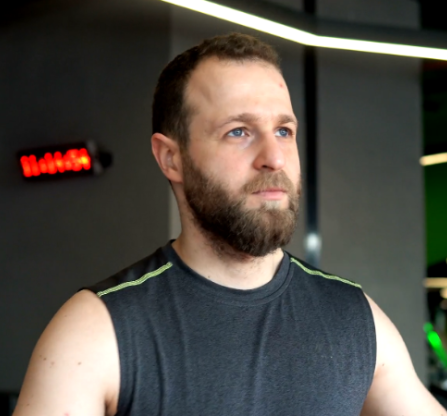
Working out is my life. I love to help others see the potential of their bodies as they transform into their best selves.
